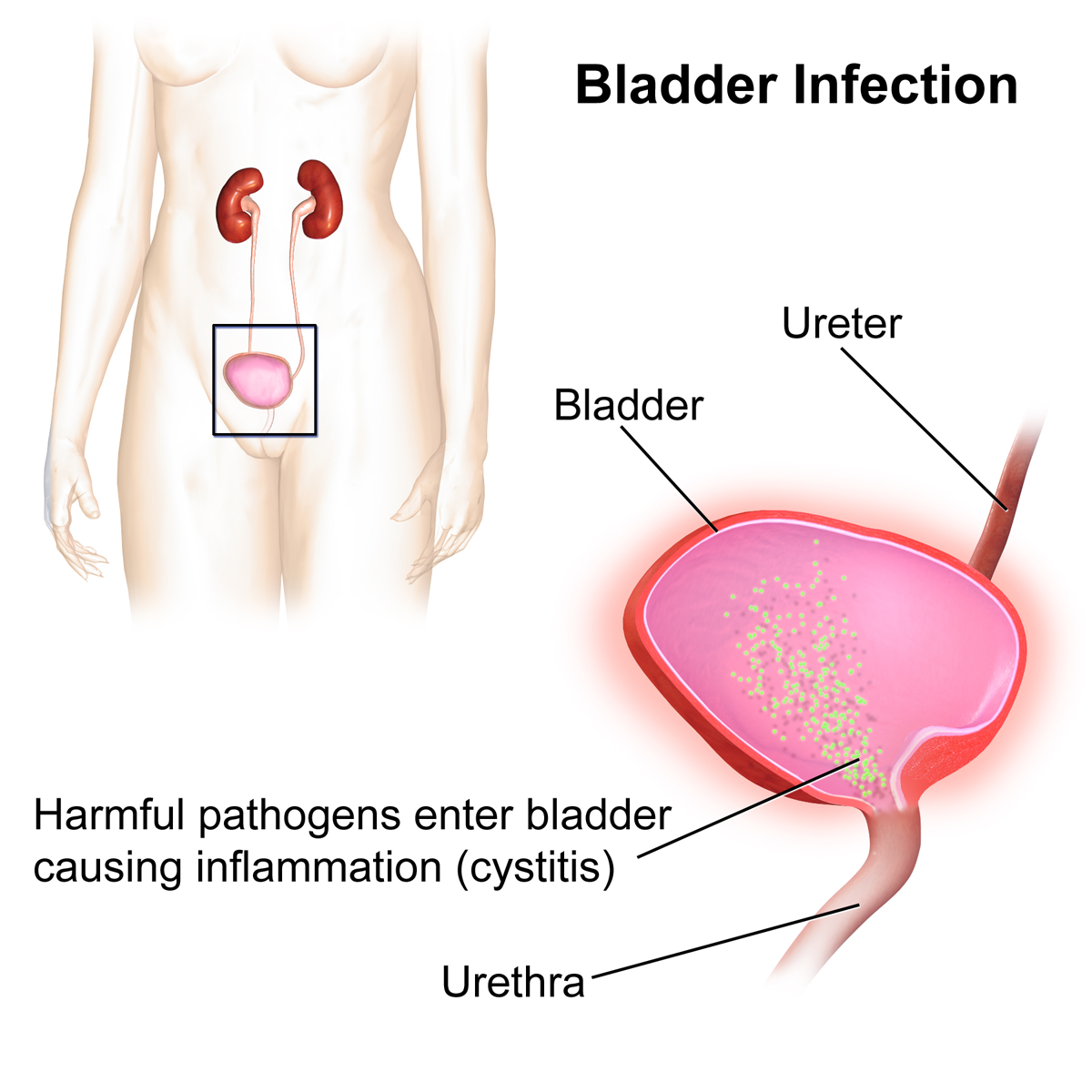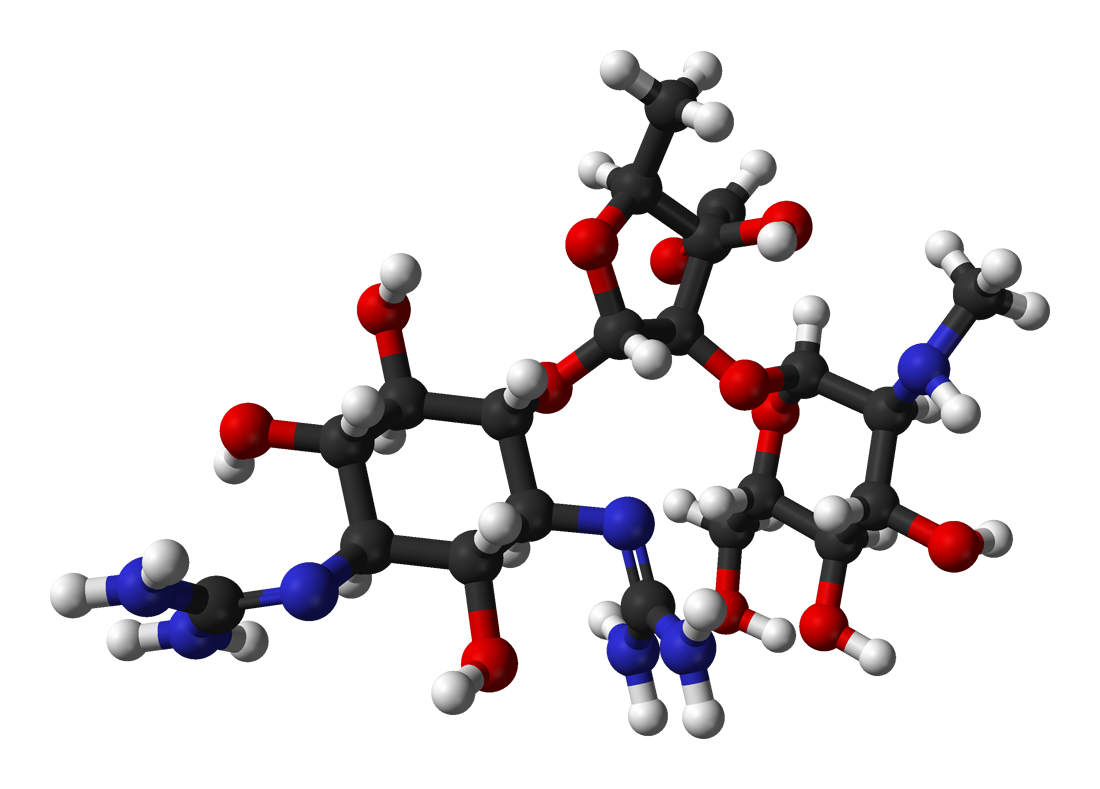|
Trimethoprim
Trimethoprim (TMP) is an antibiotic used mainly in the treatment of bladder infections. Other uses include for middle ear infections and travelers' diarrhea. With sulfamethoxazole or dapsone it may be used for ''Pneumocystis'' pneumonia in people with HIV/AIDS. It is taken orally (swallowed by mouth). Common side effects include nausea, changes in taste, and rash. Rarely it may result in blood problems such as not enough platelets or white blood cells. Trimethoprim may cause sun sensitivity. There is evidence of potential harm during pregnancy in some animals but not humans. It works by blocking folate metabolism via dihydrofolate reductase in some bacteria, preventing creation of bacterial DNA and RNA and leading to bacterial cell death. Trimethoprim was first used in 1962. It is on the World Health Organization's List of Essential Medicines. It is available as a generic medication. Medical uses It is primarily used in the treatment of urinary tract infectio ... [...More Info...] [...Related Items...] OR: [Wikipedia] [Google] [Baidu] |
Trimethoprim/sulfamethoxazole
Trimethoprim/sulfamethoxazole, sold under the trade names Bactrim, Cotrim (a short form of the British Approved Name, Co-trimoxazole) and Septra, among others, is a fixed-dose combination antibiotic medication used to treat a variety of bacterial infections. It consists of one part trimethoprim to five parts sulfamethoxazole. It is used to treat urinary tract infections, methicillin-resistant Staphylococcus aureus (MRSA) skin infections, travelers' diarrhea, respiratory tract infections, and cholera, among others. It is used both to treat and prevent pneumocystis pneumonia and toxoplasmosis in people with HIV/AIDS and other causes of immunosuppression. It can be given orally (swallowed by mouth) or intravenous infusion (slowly injected into a vein with an IV). Trimethoprim/sulfamethoxazole is on the World Health Organization's List of Essential Medicines. It is available as a generic medication. In 2022, it was the 143rd most commonly prescribed medication in the Unit ... [...More Info...] [...Related Items...] OR: [Wikipedia] [Google] [Baidu] |
Urinary Tract Infections
A urinary tract infection (UTI) is an infection that affects a part of the urinary tract. Lower urinary tract infections may involve the bladder (cystitis) or urethra ( urethritis) while upper urinary tract infections affect the kidney (pyelonephritis). Symptoms from a lower urinary tract infection include suprapubic pain, painful urination (dysuria), frequency and urgency of urination despite having an empty bladder. Symptoms of a kidney infection, on the other hand, are more systemic and include fever or flank pain usually in addition to the symptoms of a lower UTI. Rarely, the urine may appear bloody. Symptoms may be vague or non-specific at the extremities of age (i.e. in patients who are very young or old). The most common cause of infection is ''Escherichia coli'', though other bacteria or fungi may sometimes be the cause. Risk factors include female anatomy, sexual intercourse, diabetes, obesity, catheterisation, and family history. Although sexual intercourse is a ... [...More Info...] [...Related Items...] OR: [Wikipedia] [Google] [Baidu] |
Urinary Tract Infection
A urinary tract infection (UTI) is an infection that affects a part of the urinary tract. Lower urinary tract infections may involve the bladder (cystitis) or urethra (urethritis) while upper urinary tract infections affect the kidney (pyelonephritis). Symptoms from a lower urinary tract infection include suprapubic pain, painful urination (dysuria), frequency and urgency of urination despite having an empty bladder. Symptoms of a kidney infection, on the other hand, are more systemic and include fever or Abdominal pain, flank pain usually in addition to the symptoms of a lower UTI. Rarely, the urine may appear Hematuria, bloody. Symptoms may be vague or non-specific at the extremities of age (i.e. in patients who are very young or old). The most common cause of infection is ''Escherichia coli'', though other bacteria or fungi may sometimes be the cause. Risk factors include female anatomy, sexual intercourse, diabetes mellitus, diabetes, obesity, catheterisation, and famil ... [...More Info...] [...Related Items...] OR: [Wikipedia] [Google] [Baidu] |
WHO Model List Of Essential Medicines
The WHO Model List of Essential Medicines (aka Essential Medicines List or EML), published by the World Health Organization (WHO), contains the medications considered to be most effective and safe to meet the most important needs in a health system. The list is frequently used by countries to help develop their own local lists of essential medicines. , more than 155 countries have created national lists of essential medicines based on the World Health Organization's model list. This includes both Developed country, developed and Developing country, developing countries. The list is divided into core items and complementary items. The core items are deemed to be the most cost-effective options for key health problems and are usable with little additional health care resources. The complementary items either require additional infrastructure such as specially trained health care providers or diagnostic equipment or have a lower cost–benefit ratio. About 25% of items are in the ... [...More Info...] [...Related Items...] OR: [Wikipedia] [Google] [Baidu] |
Dihydrofolate Reductase
Dihydrofolate reductase, or DHFR, is an enzyme that reduces dihydrofolic acid to tetrahydrofolic acid, using NADPH as an electron donor, which can be converted to the kinds of tetrahydrofolate cofactors used in one-carbon transfer chemistry. In humans, the DHFR enzyme is encoded by the ''DHFR'' gene. It is found in the q14.1 region of chromosome 5. There are two structural classes of DHFR, evolutionarily unrelated to each other. The former is usually just called DHFR and is found in bacterial chromosomes and animals. In bacteria, however, antibiotic pressure has caused this class to evolve different patterns of binding diaminoheterocyclic molecules, leading to many "types" named under this class, while mammalian ones remain highly similar. The latter (type II), represented by the plastid-encoded R67, is a tiny enzyme that works by forming a homotetramer. Function Dihydrofolate reductase converts dihydrofolate into tetrahydrofolate, a proton shuttle required for the de no ... [...More Info...] [...Related Items...] OR: [Wikipedia] [Google] [Baidu] |
Pneumocystis Pneumonia
''Pneumocystis'' pneumonia (PCP), also known as ''Pneumocystis jirovecii'' pneumonia (PJP), is a form of pneumonia that is caused by the yeast-like fungus '' Pneumocystis jirovecii''. ''Pneumocystis'' specimens are commonly found in the lungs of healthy people although it is usually not a cause for disease. However, they are a source of opportunistic infection and can cause lung infections in people with a weak immune system or other predisposing health conditions. PCP is seen in people with HIV/AIDS (who account for 30-40% of PCP cases), those using medications that suppress the immune system, and people with cancer, autoimmune or inflammatory conditions, and chronic lung disease. Signs and symptoms Signs and symptoms may develop over several days or weeks and may include: shortness of breath and/or difficulty breathing (of gradual onset), fever, dry/non-productive cough, weight loss, night sweats, chills, and fatigue. Uncommonly, the infection may progress to involve other ... [...More Info...] [...Related Items...] OR: [Wikipedia] [Google] [Baidu] |
Folate
Folate, also known as vitamin B9 and folacin, is one of the B vitamins. Manufactured folic acid, which is converted into folate by the body, is used as a dietary supplement and in food fortification as it is more stable during processing and storage. Folate is required for the body to make DNA and RNA and metabolise amino acids necessary for cell division and maturation of blood cells. As the human body cannot make folate, it is required in the diet, making it an essential nutrient. It occurs naturally in many foods. The recommended adult daily intake of folate in the U.S. is 400 micrograms from foods or dietary supplements. Folate in the form of folic acid is used to treat anemia caused by folate deficiency. Folic acid is also used as a supplement by women during pregnancy to reduce the risk of neural tube defects (NTDs) in the baby. NTDs include anencephaly and spina bifida, among other defects. Low levels in early pregnancy are believed to be the cause of more tha ... [...More Info...] [...Related Items...] OR: [Wikipedia] [Google] [Baidu] |
Klebsiella Pneumoniae
''Klebsiella pneumoniae'' is a Gram-negative, non-motile, encapsulated, lactose- fermenting, facultative anaerobic, rod-shaped bacterium. It appears as a mucoid lactose fermenter on MacConkey agar. Although found in the normal flora of the mouth, skin, and intestines, it can cause destructive changes to human and animal lungs if aspirated, specifically to the alveoli, resulting in bloody, brownish or yellow colored jelly-like sputum. In the clinical setting, it is the most significant member of the genus ''Klebsiella'' of the Enterobacteriaceae. ''K. oxytoca'' and ''K. rhinoscleromatis'' have also been demonstrated in human clinical specimens. In recent years, ''Klebsiella'' species have become important pathogens in nosocomial infections. It naturally occurs in the soil, and about 30% of strains can fix nitrogen in anaerobic conditions. As a free-living diazotroph, its nitrogen-fixation system has been much-studied, and is of agricultural interest, as ''K. pneumoniae'' has ... [...More Info...] [...Related Items...] OR: [Wikipedia] [Google] [Baidu] |
Pneumocystis Jirovecii
''Pneumocystis jirovecii'' (previously ''P. carinii'') is a yeast-like fungus of the genus ''Pneumocystis''. The causative organism of ''Pneumocystis'' pneumonia, it is an important human pathogen, particularly among immunocompromised hosts. Prior to its discovery as a human-specific pathogen, ''P. jirovecii'' was known as ''P. carinii''. Lifecycle The complete lifecycles of any of the species of ''Pneumocystis'' are not known, but presumably all resemble the others in the genus. The terminology follows zoological terms, rather than mycological terms, reflecting the initial misdetermination as a protozoan parasite. It is an extracellular fungus. All stages are found in lungs and because they cannot be cultured '' ex vivo'', direct observation of living ''Pneumocystis'' is difficult. The trophozoite stage is thought to be equivalent to the so-called vegetative state of other species (such as '' Schizosaccharomyces pombe''), which like ''Pneumocystis'', belong to the Taphrino ... [...More Info...] [...Related Items...] OR: [Wikipedia] [Google] [Baidu] |
Diaminopyrimidine
Diaminopyrimidines (DAP) are a class of organic chemical compounds that include two amine groups on a pyrimidine ring. They include many dihydrofolate reductase inhibitor drugs (such as pyrimethamine, trimetrexate, and piritrexim and the antibiotics iclaprim and trimethoprim). Some have been patented as anti-cancer drugs. See also * 2,4-Diaminopyrimidine * 4,5-Diaminopyrimidine References Aminopyrimidines {{organic-compound-stub ... [...More Info...] [...Related Items...] OR: [Wikipedia] [Google] [Baidu] |
Staphylococcus Saprophyticus
''Staphylococcus saprophyticus'' is a Gram-positive coccus belonging to the genus ''Staphylococcus''. ''S. saprophyticus'' is a common cause of community-acquired urinary tract infections. History ''Staphylococcus saprophyticus'' was not recognized as a cause of urinary tract infections until the early 1970s, more than 10 years after its original demonstration in urine specimens. Prior to this, the presence of coagulase-negative staphylococci (CoNS) in urine specimens was dismissed as contamination. Epidemiology and pathogenesis In humans, ''S. saprophyticus'' is found in the normal flora of the female genital tract and perineum. It has been isolated from other sources, too, including meat and cheese products, vegetables, the environment, and human and animal gastrointestinal tracts. ''S. saprophyticus'' causes 10–20% of urinary tract infections (UTIs). In females 17–27 years old, it is the second-most common cause of community-acquired UTIs, after ''Escherichia coli''. ... [...More Info...] [...Related Items...] OR: [Wikipedia] [Google] [Baidu] |
Travelers' Diarrhea
Travelers' diarrhea (TD) is a stomach and intestinal infection. TD is defined as the passage of unformed stool (one or more by some definitions, three or more by others) while traveling. It may be accompanied by abdominal cramps, nausea, fever, headache and bloating. Occasionally dysentery may occur. Most travelers recover within three to four days with little or no treatment. About 12% of people may have symptoms for a week. Bacteria are responsible for more than half of cases, typically via foodborne illness and waterborne diseases. The bacteria enterotoxigenic ''Escherichia coli'' (ETEC) are typically the most common except in Southeast Asia, where '' Campylobacter'' is more prominent. About 10 to 20 percent of cases are due to norovirus. Protozoa such as ''Giardia'' may cause longer term disease. The risk is greatest in the first two weeks of travel and among young adults. People affected are more often from the developed world. Recommendations for prevention include ea ... [...More Info...] [...Related Items...] OR: [Wikipedia] [Google] [Baidu] |







